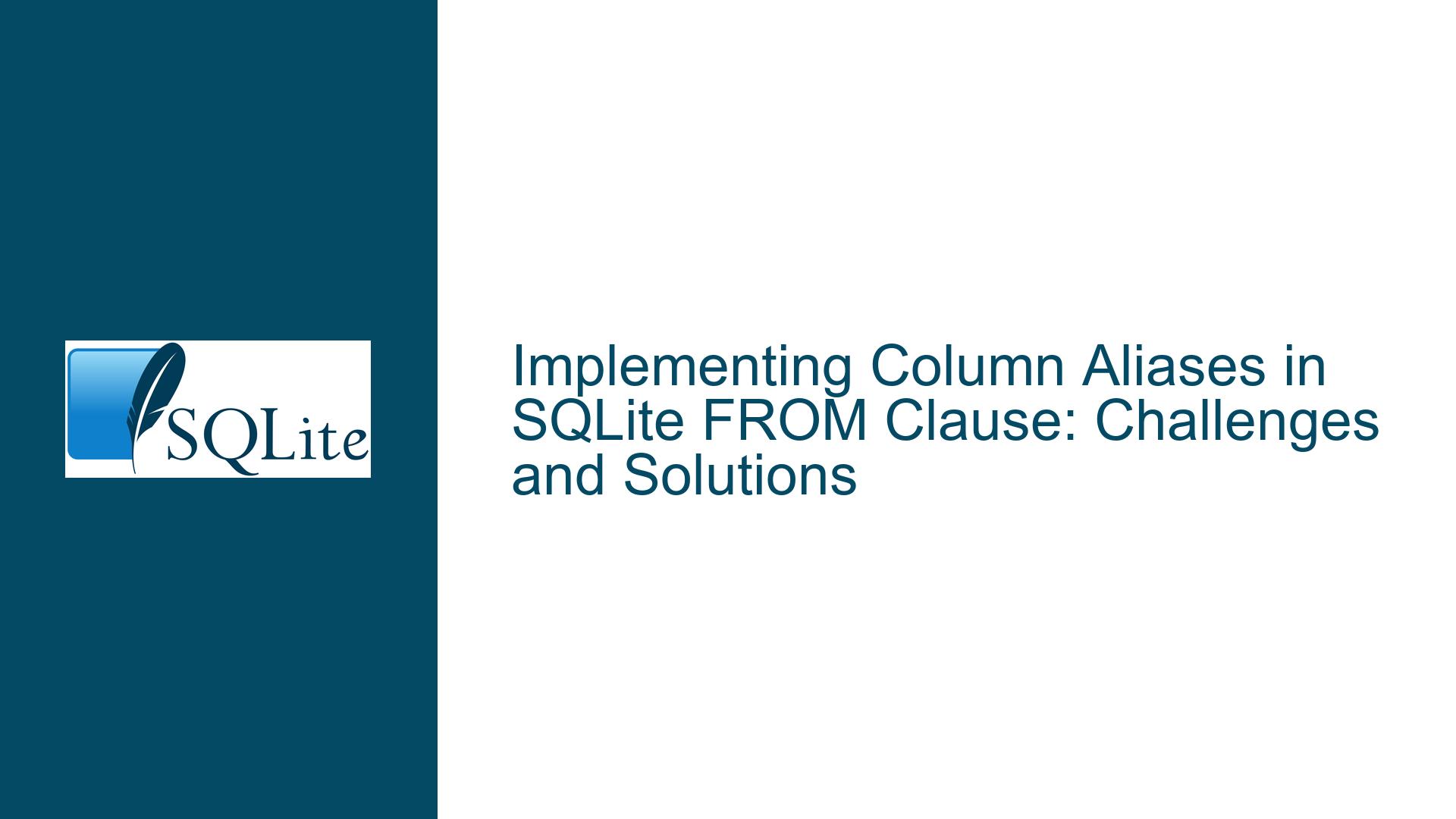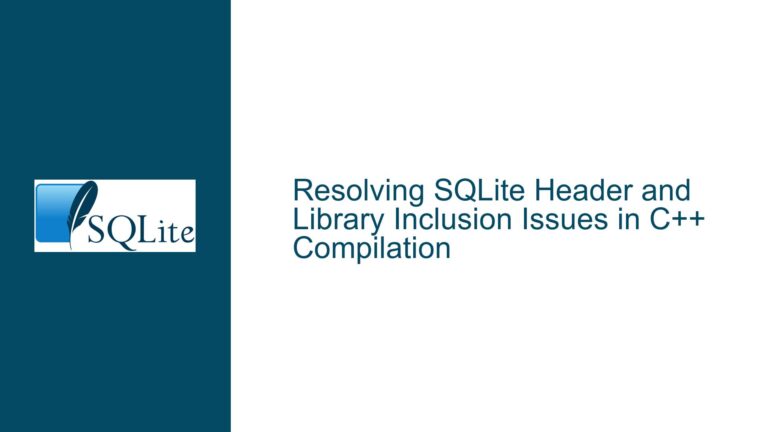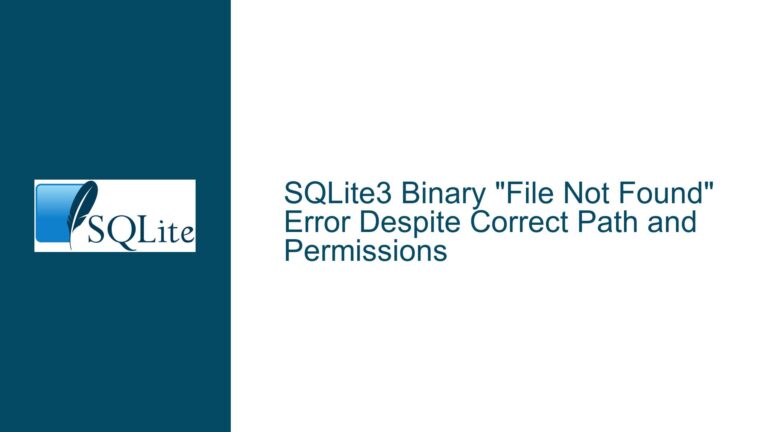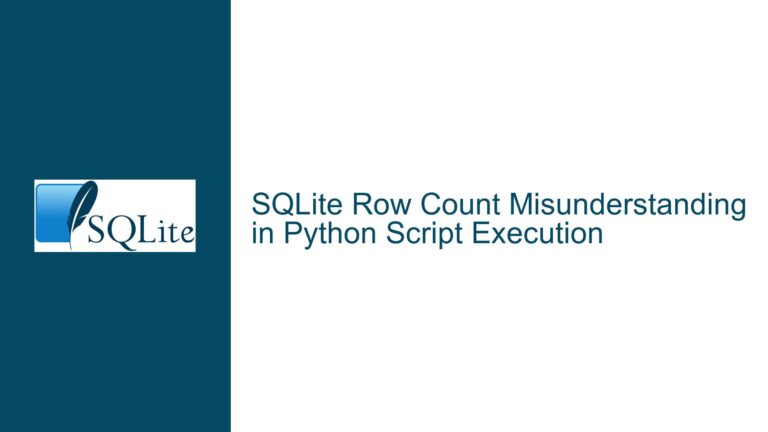Implementing Column Aliases in SQLite FROM Clause: Challenges and Solutions
Understanding Column Alias Propagation in FROM Clause Subqueries
The core challenge involves enabling PostgreSQL-style column renaming within the FROM clause of SQLite queries. A user wants to execute statements such as:
SELECT *
FROM (SELECT 1 a, 2 b) x
JOIN (SELECT 2 c, 3 d) y(b)
USING (b);
where the subquery y(b) renames columns c and d to b and a new implicit name (likely d). The result set should reflect aliased column names while resolving joins via USING or NATURAL clauses. SQLite currently lacks native support for this syntax, requiring modifications to its parser, name resolution logic, and result-set construction.
The technical hurdles stem from SQLite’s internal representation of the FROM clause. When a subquery or table is aliased (e.g., y(b)), SQLite does not natively associate the alias list with the output columns of the subquery. This creates ambiguity during column reference resolution, especially when joins involve USING or when wildcards (*) expand to include columns from multiple tables. For example, in JOIN ... USING(b), the engine must reconcile the aliased column y.b with the original column x.b from the first subquery. Without explicit aliasing in the FROM clause, SQLite relies on the original column names from subqueries, leading to potential conflicts or undefined behavior when names overlap.
Key components requiring modification include the SrcItem structure (which represents tables/subqueries in the FROM clause) and the lookupName function (responsible for resolving column references). The SrcItem must be extended to store column aliases, while lookupName needs logic to prioritize these aliases during resolution. Additionally, the parser must recognize the new syntax and populate the SrcItem’s alias fields. Challenges arise in preserving backward compatibility, handling compound queries (e.g., UNION), and ensuring that wildcard expansions respect the aliased column names.
Root Causes of Column Alias Resolution Failures
1. Absence of Column Alias Storage in FROM Clause Entities
SQLite’s SrcItem structure (defined in sqliteInt.h) currently stores table/subquery aliases (e.g., y in FROM ... AS y) but lacks fields to track per-column aliases specified in the FROM clause. When parsing y(b), the (b) component is ignored, leaving no metadata to map the subquery’s columns to their aliases. Consequently, any references to y.b will fail unless the subquery explicitly outputs a column named b.
2. Name Resolution Logic Ignores FROM-Level Aliases
The lookupName function resolves column references by checking table aliases, original column names, and EXCLUDED/NEW references in triggers. It does not account for column aliases defined in the FROM clause because SQLite’s grammar does not parse them. Even if the SrcItem were modified to store these aliases, lookupName would need adjustments to prioritize them over underlying column names. This is critical for USING clauses, which rely on column name matching across joined tables. If y(b) renames a column to b, the USING(b) clause should match it to x.b, but SQLite’s current logic cannot associate y.b with the aliased column.
3. Wildcard Expansion and Column Visibility Conflicts
When a SELECT * is used, SQLite expands the wildcard to include all columns from the FROM clause tables, using their original names. If a FROM clause subquery has column aliases (e.g., y(b, d)), the wildcard should expose b and d instead of the underlying c and d. However, the current expansion logic uses the ExprList of the subquery’s result set, which retains original names. This leads to inconsistencies when aliases are applied at the FROM level but not propagated to the outer query’s column list.
Modifying SQLite’s Internals for FROM Clause Column Aliases
Step 1: Extend the SrcItem Structure
Add a zColAlias field to the SrcItem struct to store column aliases:
struct SrcItem {
// Existing fields...
char **zColAlias; // Array of column aliases
int nColAlias; // Number of column aliases
};
During parsing, when a FROM clause includes y(b, d), populate zColAlias with the aliases b and d. The parser must validate that the number of aliases matches the subquery’s column count.
Step 2: Adjust Column Name Resolution in lookupName
Modify lookupName in resolve.c to check SrcItem.zColAlias before using the original column names:
for(i=0; i<pSrc->nColAlias; i++){
if( sqlite3StrICmp(pSrc->zColAlias[i], zCol) == 0 ){
// Match found; resolve to the i-th column of pSrc
return resolveAlias(pParse, pSrc, i, zCol);
}
}
This prioritizes FROM-level aliases over the subquery’s inherent column names. If a column is referenced as y.b, the resolver will map it to the first column of y’s subquery, since zColAlias[0] is b.
Step 3: Propagate Aliases to Wildcard Expansions
In selectExpander (part of resolve.c), modify the logic that expands * to use zColAlias when present:
if( pSrc->zColAlias ){
for(i=0; i<pSrc->nColAlias; i++){
Expr *pExpr = sqlite3CreateColumnExpr(db, pSrc, i);
pExpr->iColumn = i;
pExpr->zName = pSrc->zColAlias[i];
addColumnToExprList(pEList, pExpr);
}
} else {
// Existing expansion logic
}
This ensures that SELECT * FROM (SELECT 1 a, 2 b) x(c, d) returns columns c and d instead of a and b.
Step 4: Handle USING and NATURAL Joins
In sqliteProcessJoin, adjust the logic that matches columns for USING and NATURAL joins. For USING(b), the algorithm must compare the aliased column names of the joined tables. If the left table has a column alias b and the right table’s underlying column is named c but aliased to b, the join condition should match them.
Step 5: Test Edge Cases
- Compound Queries: Ensure
UNION/INTERSECTsubqueries with column aliases in the FROM clause do not cause name mismatches. - Correlated Subqueries: Verify that aliases in outer queries do not interfere with inner query resolution.
- Asterisk in Subqueries: Confirm that
SELECT *within a FROM-aliased subquery expands to original names, while the outer query’sSELECT *uses the aliases.
Workaround Without Modifying SQLite
For users unable to modify SQLite’s code, emulate the behavior with nested subqueries:
SELECT x.b, x.a, y.d
FROM (SELECT 1 a, 2 b) x
JOIN (SELECT c AS b, d FROM (SELECT 2 c, 3 d)) y
USING (b);
This explicitly renames columns in the inner subqueries, achieving the same result as the desired syntax.
Conclusion
Implementing FROM clause column aliases in SQLite requires deep changes to the parser, name resolver, and result-set generator. By extending SrcItem, adjusting lookupName, and refining wildcard handling, developers can introduce PostgreSQL-style aliasing. However, the complexity of SQLite’s internals demands rigorous testing, particularly for joins and compound queries. For educational purposes, focusing on the resolver and parser modifications offers valuable insights into SQL engines’ workings.






